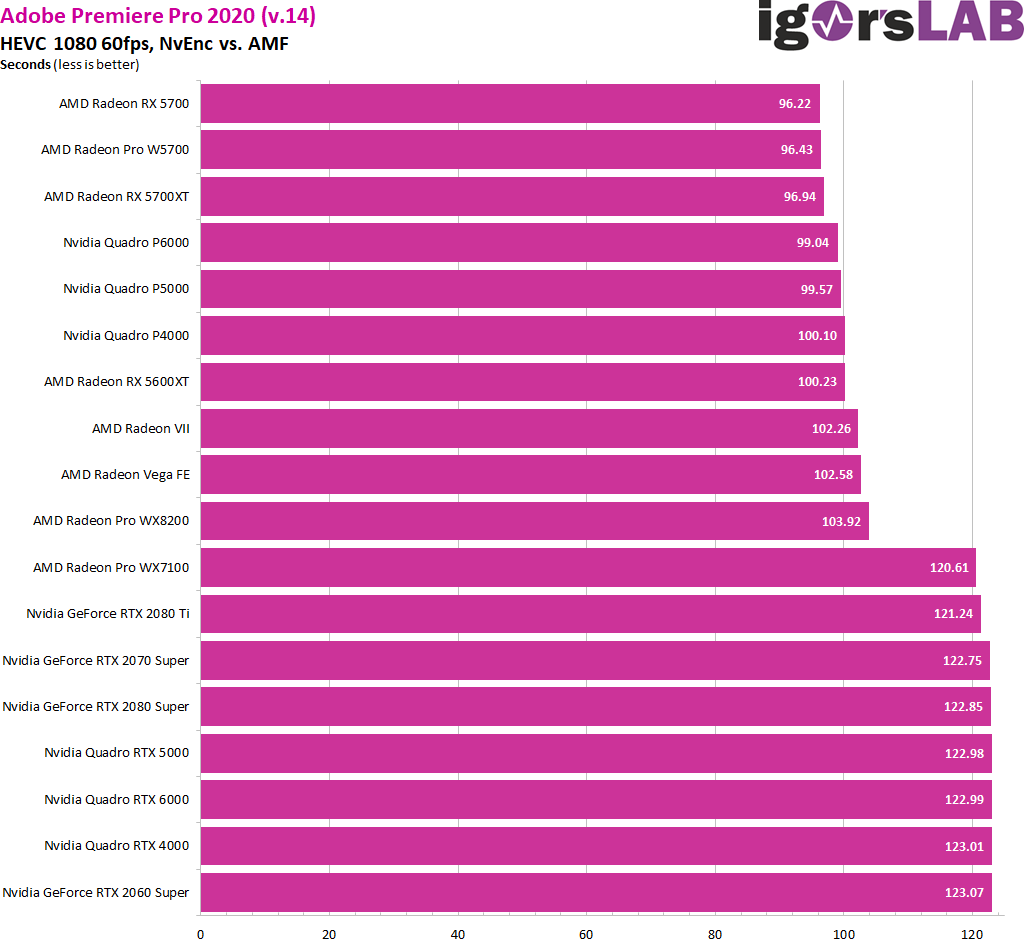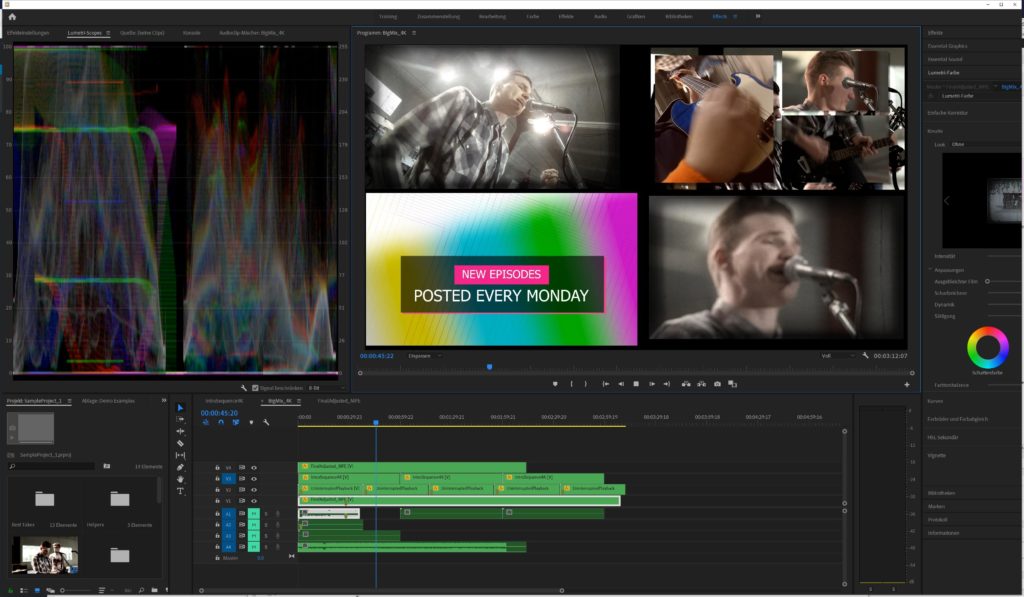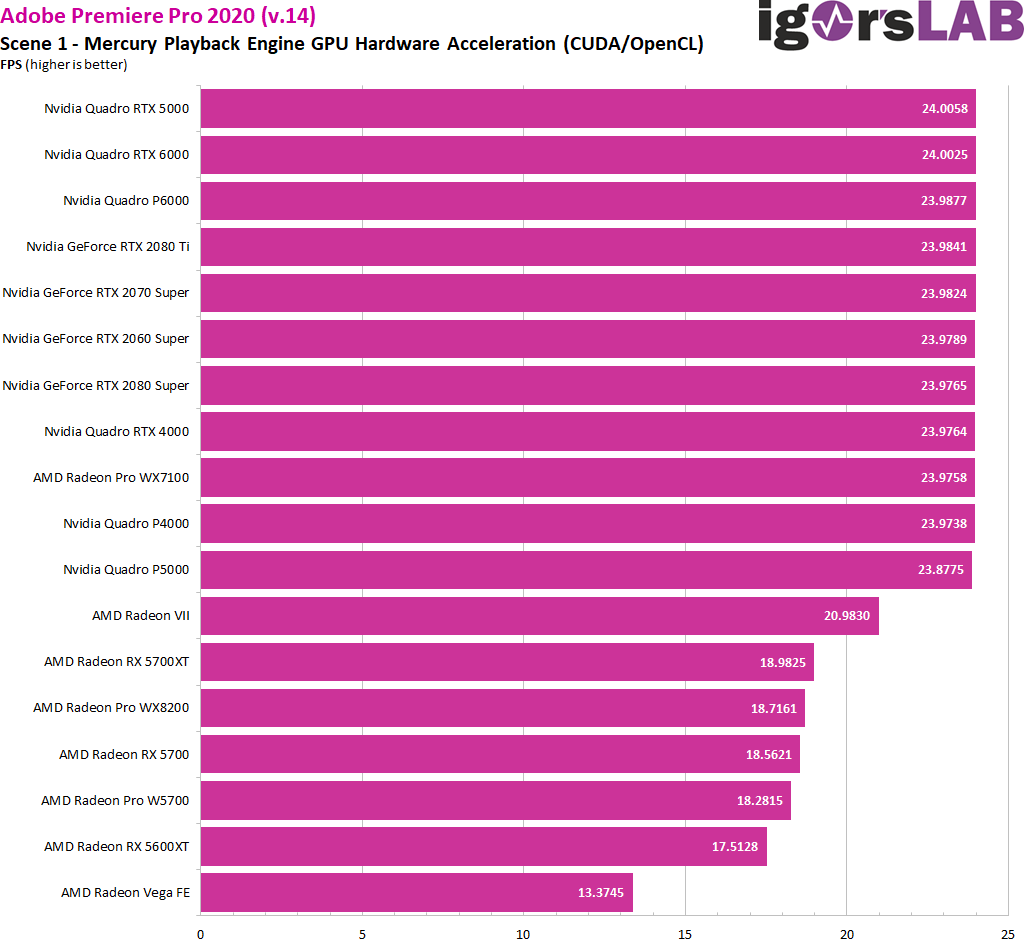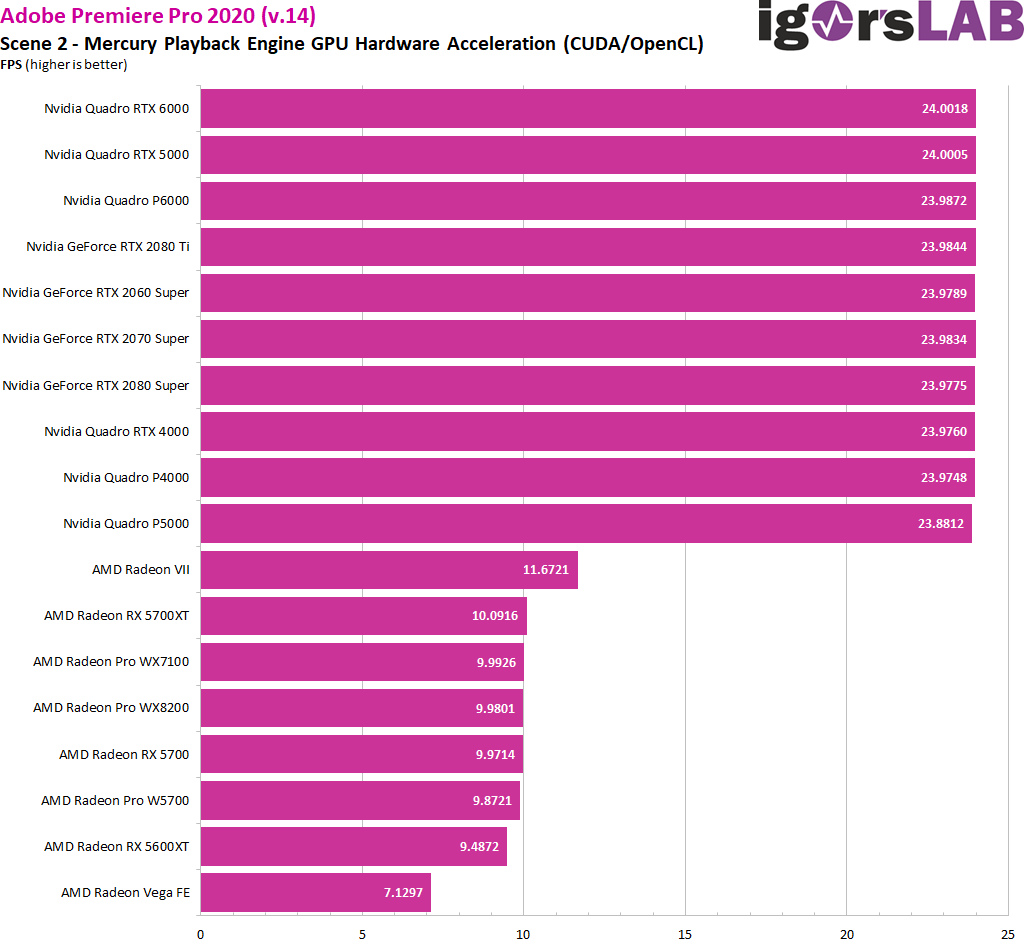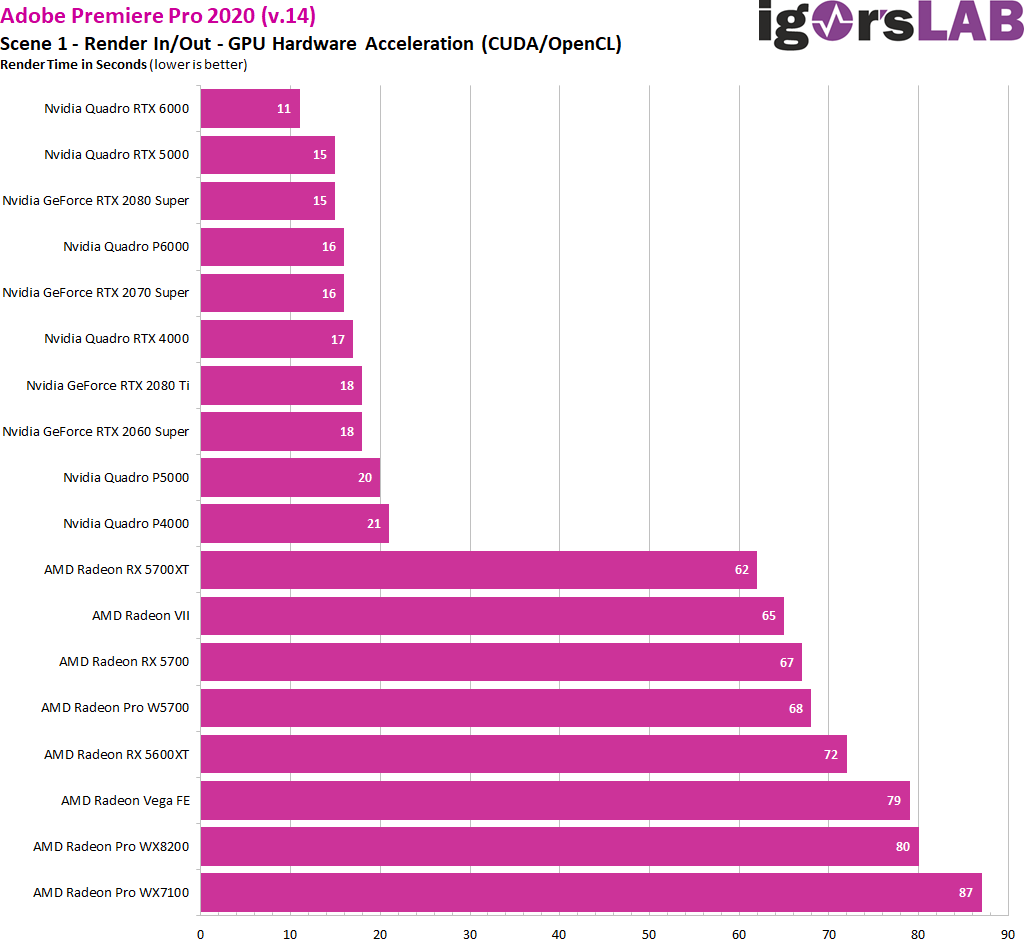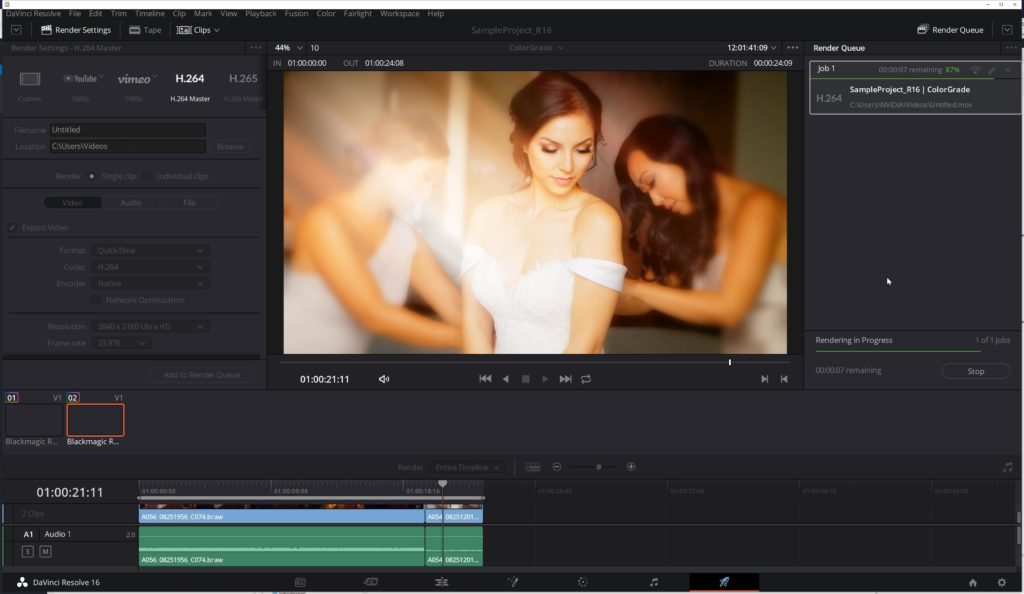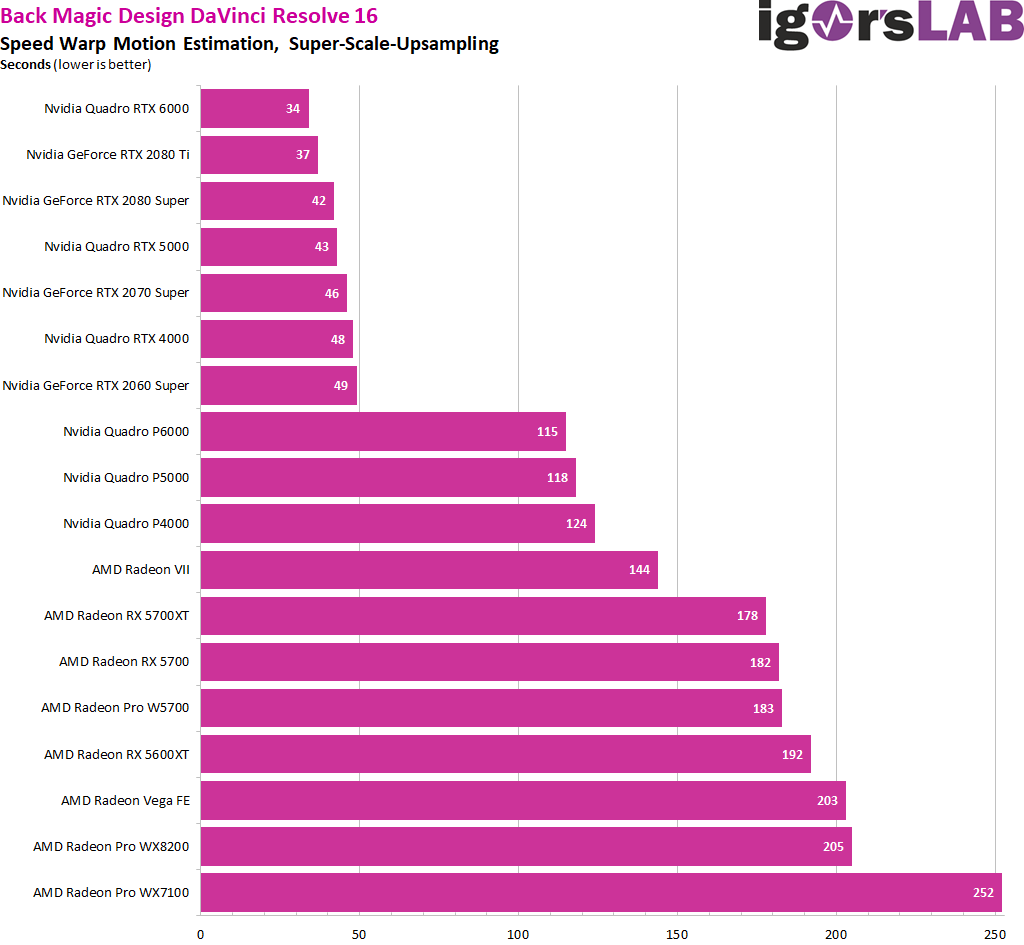Video Encoding
As a final benchmark I will use Adobe Premiere Pro 2020 (v. 14). For this I used one of my YouTube videos as a template for the HEVC codec and run the encoding via the plugin Voukoder R2, depending on the graphics card, via NvEnc or AMF with the highest quality setting. The video uploaded here was rendered e.g. with NvEnc on a RTX Titan.
The time can be compared in numbers, but unfortunately the output quality cannot. The longer rendering time of the Quadro RTX for example deceives us into thinking that a clearly higher image quality is achieved here, which is in (almost) no way inferior to the CPU. The clips encoded with AMF are much worse even in the highest settings and they are full of artifacts and image errors. Nevertheless a comparison of the respective manufacturers among themselves is worthwhile. The encoder of the RTX cards acts a bit slower than Pascal, but offers better results in picture quality. Of course the quality could be drastically reduced, whereby the RTX cards with identical (worse) quality would be significantly faster again.
GPU acceleration in Adobe Premiere Pro CC 2020 enables content creators to speed up video editing workflows, so even advanced multilayer timelines with sophisticated effects (such as Lumetri color effects) can be played, scrubbed, and edited in real time without losing frames. That at least would be the ideal case. The Mercury Playback Engine supports CUDA and OpenCL as two methods of hardware acceleration, although some OpenCL implementations can cause problems. However, both work, even if the number of supported filters does not quite match.
Today’s benchmark is based on several sequences, such as a 4K intro with various effects and sounds on two video layers and one layer with title graphics. Among the applied effects are: Lens distortion, Gaussian blur, mosaic, search borders, together with video transformations (rotation). Another sequence represents a completely edited music video with 4K upscaling, including luma curve adjustment, fast blur, noise, hue changes, RGB curves, black and white effects, image mixing and video overlay.
Finally, the third sequence shows the simultaneous processing of a total of three Full HD subsequences within a single 4K timeline. Three separate sub-sequences are shown, whereby one sequence is additionally duplicated. All effects for the subsequences are processed within the master timeline.
In the benchmarks I compare first the performance of the hardware-based real-time playback for the first two sequences. The real-time preview of the timelines ideally runs at around 24 FPS, anything significantly below that is jerky and disturbs the work. The third one runs on all cards with more than 23 FPS and thus acceptably fast:.
Let’s now test the pre-rendering for sequences one and three. Pre-rendering avoids all of the above stagnation of course, but it also takes a lot of time. Again, scene three is the most balanced, so I chose it as a contrast to scene one.
DaVinci Resolve 16 is the latest version of Black Magic Design’s video editing software, combining professional editing, colour correction, visual effects and audio post-production. You can switch between editing, colour, effects and audio in real time while editing video material at up to 8K resolution. The core functions in Resolve are accelerated by both CUDA and OpenCL, including RAW file processing, color correction, advanced video filters and compositing.
The current version 16 also introduces other new GPU-accelerated features, including scopes and functions that use the new DaVinci Neural Engine, which relies on machine learning to enable powerful new features such as face recognition, estimation of the speed of deformation movement (Speed Warp Motion), automatic face tracking and enhancement, super scaling, automatic color and smart color matching.
The sample project for the first benchmark uses this footage in full 4K resolution without down-sampling or using any proxies. In addition, the SuperScale upsampling sample uses a 4K ProRES and an HD H.264 video file.
The Speed Warp Motion project uses an HD MPEG-4 file and upscaling to Ultra-HD.
- 1 - Overview & Benchmark Selection
- 2 - Creo 3.0
- 3 - Solidworks 2019
- 4 - Solidworks 2019 Enhanced
- 5 - 3ds Max 2015
- 6 - Inventor Pro 2020
- 7 - Various CAD and Science Applications
- 8 - Windows GDI und GDI+ Driver Performance
- 9 - Rendering & Compute
- 10 - Adobe Premiere Pro 2020 & DaVinci Resolve 16
- 11 - Adobe Lightroom Classic (2020)
- 12 - Autodesk Maya 2019 and Arnold
- 13 - Blender RTX (OptiX) & OctaneBench
- 14 - Thermal Imaging / Infrared
- 15 - Power Consumption
- 16 - PSU Recommendation















